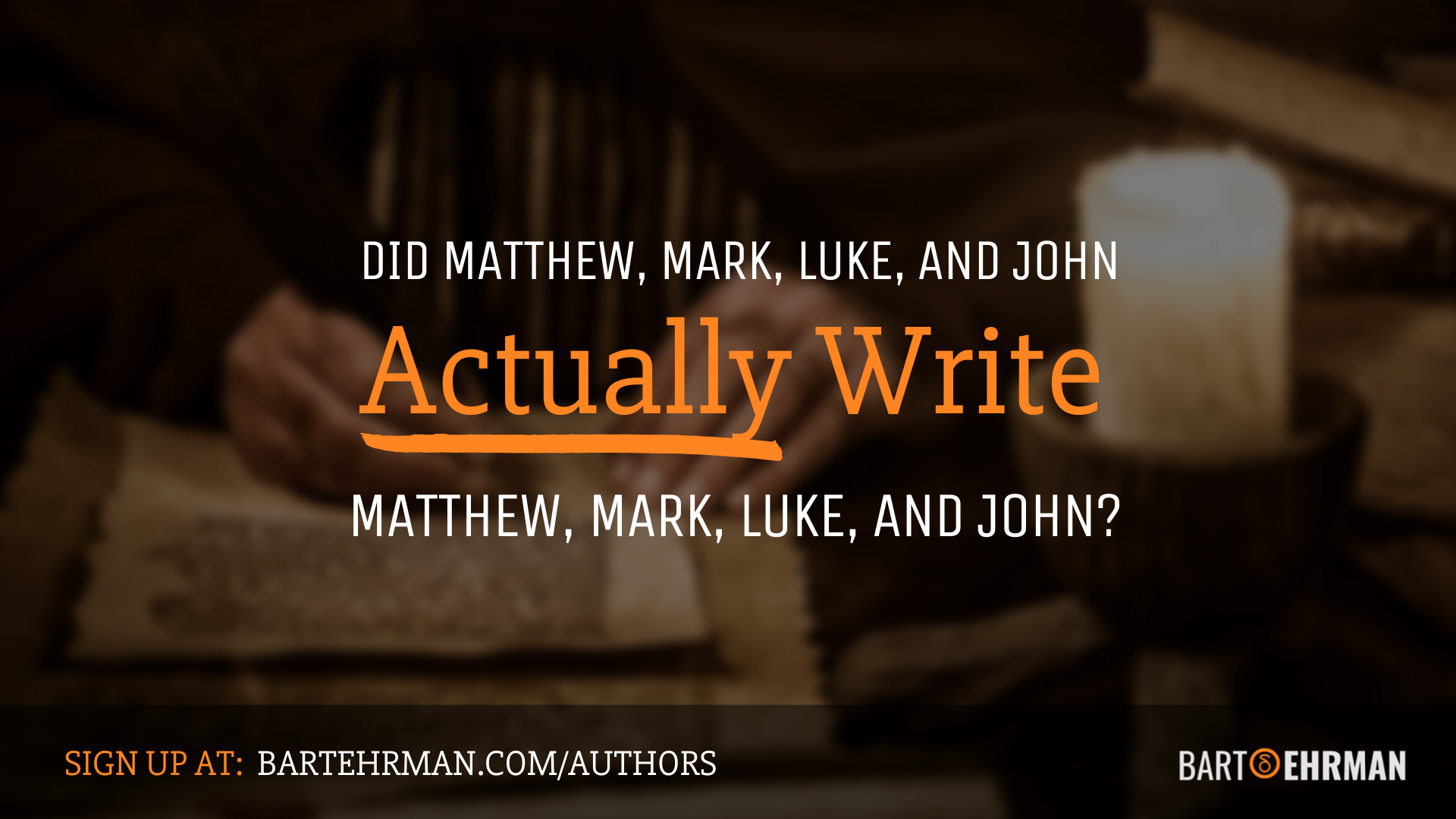Books Removed from the Bible: A List of All 17 Books (With Summaries)

Written by Marko Marina, Ph.D.
Author | Historian
Author | Historian | BE Contributor
Verified! See our guidelines
Verified! See our editorial guidelines
Date written: November 9th, 2024
Edited by Laura Robinson, Ph.D.
Disclaimer: The views and opinions expressed in this article belong to the author and do not necessarily match my own. - Dr. Bart D. Ehrman
I still remember sitting in class as a sophomore, staring at the ancient text of the Codex Sinaiticus for the first time. For those unfamiliar, the Codex Sinaiticus is one of the oldest and most complete manuscripts of the Christian Bible, dating back to the 4th century C.E. It contains significant portions of both the Old and New Testaments.
But as I pored over the text of the New Testament for an assignment, something unusual jumped out at me. Alongside the familiar 27 books we all recognize as canonical today, there were two unexpected additions: the Epistle of Barnabas and the Shepherd of Hermas.
I remember thinking, “Wait, I didn’t sign up for extra homework!” But, jokes aside, that moment marked the first time I seriously considered the complexity behind the emergence of the Christian Scriptures — and more specifically, the books removed from the Bible.
What I had always assumed was a neatly defined collection of sacred texts had, at one point in history, included other writings that I’d never even heard of. What books were removed from the Bible? What determined whether a book was worthy of being “canonical” or destined to be forgotten? What is the content of these “lost books of the Bible”?
In this article, we’re going to delve into just that. We’ll start by exploring the Old Testament Apocrypha — books that Protestants, following the Jewish canon, decided to remove from their version of the Bible.
Then, we’ll shift to early Christian writings that, for a time, were considered part of the Christian canon but were eventually excluded. These writings, such as the Epistle of Barnabas and the Shepherd of Hermas, once held a revered place among some early Christian communities but were later discarded from the Bible as we know it today.
But before we dive into the world of Biblical canon, asking what books were removed from the Bible, I want to invite you to check out Bart D. Ehrman’s excellent online course “In the Beginning: History, Legend, and Myth in Genesis.”
Did you ever wonder if the stories from the Book of Genesis are historical? Did they really happen? If you are curious, then this course is the right place to go! In it, Dr. Ehrman provides a scholarly analysis of the first book in the Old Testament known for its fascinating stories.

Books Removed From the Bible: Old Testament Apocrypha
Our exploration into the mysteries of the books removed from the Bible begins with the Old Testament Apocrypha or the Deuterocanonical books. If this is your first encounter with these terms, don't worry!
In his Introduction to the Old Testament Apocrypha, Otto Kaiser provides a clear definition: "The terms 'Deuterocanonical books' or 'Old Testament Apocrypha' refer to the Jewish documents that originated between the third century B.C.E. and the first century C.E. and that were incorporated into the Greek [Septuagint] but not the Hebrew Bible.
(Affiliate Disclaimer: We may earn commissions on products you purchase through this page at no additional cost to you. Thank you for supporting our site!)
However, within the Protestant traditions and following the precedent set by the Jewish canon that was mainly fixed by the end of the 2nd century C.E., these books were excluded. Today, most Protestants (unlike Catholics) don’t accept the canonical status of Deuterocanonical books.
These writings, many of which were composed in Greek during a later period than the rest of the Hebrew Bible, were excluded due to concerns about their language, authorship, and the era in which they were composed.
Below, you will find a table of these books along with brief explanations as to why they were excluded from the Protestant Biblical canon.
Book | Reasons for Exclusion |
|---|---|
Judith | Written later, composed in Greek |
Tobit | Written in Greek, concerns about later composition |
1 Maccabees | Not originally written in Hebrew |
2 Maccabees | Not originally written in Hebrew |
Wisdom of Solomon | Written in Greek; concerns about the authorship |
Sirach | Later composition, concerns about the authorship |
Baruch | Written in Greek, concerns about the authorship |
Additions to Esther | Greek additions to the Hebrew text |
Additions to Daniel | Greek additions to the Hebrew text |
Old Testament Apocrypha: Summaries
#1 – Judith
Judith tells the story of a Jewish widow who saves her people by assassinating an Assyrian general named Holofernes. The book combines elements of historical narrative and fiction to emphasize themes of faith, courage, and divine intervention.
#2 – Tobit
Tobit is a religious novel that follows the righteous Israelite Tobit and his son Tobias. The story explores themes of piety, charity, and divine justice, and includes the intervention of the archangel Raphael, who aids Tobias in healing his father’s blindness and defeating a demon.
In his Commentary on Shorter Books of the Apocrypha, John C. Dancy provided additional information about the content of this fascinating book:
It is actually about the fortunes of two related Jewish families living in exile in what is now Iraq and Iran. Each family falls, through no fault of its own, into misfortune. Tobit, head of one family, loses his job and goes blind. Sarah, the daughter of the other family, is possessed by a demon who prevents her successive attempts at marriage. Both call upon God, who intervenes through his angel Raphael. Raphael guides Tobit’s son Tobias on various adventures which lead to his marriage with his kinswoman Sarah. In the end, the fortunes of both families are restored.
#3 – 1 Maccabees
1 Maccabees is a historical account of the Jewish revolt against the Seleucid Empire led by the Maccabee family, focusing on Judas Maccabeus. The book covers the struggle for Jewish independence and the rededication of the Jerusalem Temple, which is commemorated in Hanukkah.
However, the adjective “historical” should be taken “cum grano salis” (“with a grain of salt”). As Daniel R. Swartz explains in his Commentary on 1 Maccabees:
1 Maccabees was not produced by someone who just happened to be interested in observing history, understanding it, and recording it. Rather, the work had a mission, a mandate: it is a work of dynastic history by a mouthpiece for the Hasmoneans, meant to persuade its readers that the Hasmonean rule of Judea was entirely warranted and appropriate.
#4 – 2 Maccabees
Unlike 1 Maccabees, 2 Maccabees is more theological and focuses on God's role in the Jewish revolt. It emphasizes martyrdom, divine justice, and resurrection, and retells some events from a more religious perspective.
#5 – Wisdom of Solomon
Wisdom of Solomon is a philosophical and theological text that praises wisdom as a divine gift. It addresses themes like the immortality of the soul and divine retribution, blending Jewish beliefs with Hellenistic philosophy.
#6 – Sirach
Sirach, also known as Ecclesiasticus, is a collection of proverbs and ethical teachings. Written by Ben Sira around 180 B.C.E., it focuses on wisdom, proper conduct, and the importance of honoring God, with practical advice for daily life.
Michael D. Coogan, in The New Oxford Annotated Bible with Apocrypha, notes the historical importance of this book:
Sirach is the longest wisdom book that we have from ancient Judaism, and it offers important insight into life in ancient Judea during a period for which we lack many other sources. While Ben Sira incorporates the insights of traditional ancient Near Eastern wisdom teaching on topics like friendship, speech, women, death, business, wealth, creation, and fear of the Lord, he innovates by bringing that traditional teaching under the umbrella of the distinctive traditions of Israel.
#7 – Baruch
Baruch is presented as a work by the secretary of the prophet Jeremiah. It includes prayers, reflections on the Babylonian exile, and an exhortation for the people of Israel to turn back to God.
Referring to the possible authorship of Baruch, Otto Kaiser notes:
According to its superscription in 1:1-2, the scribe Baruch ben Neriah, known from the book of Jeremiah as the prophet’s assistant, should be regarded as the author of the booklet...Although the scribe Baruch ben Neriah is a historical figure as evidenced by a seal impression found in Tell Bet Mirsim, its attestation and character permit no doubt as to the pseudepigraphical character of the book.
It’s possible that the mystery surrounding its authorship was one of the reasons why Baruch was removed from the Bible!
#8 – Additions to Esther
The Additions to Esther consist of six extra chapters that expand the narrative with more religious elements, including prayers and the visible hand of God, which are largely absent from the original Hebrew version.
#9 – Additions to Daniel
The Additions to Daniel include stories such as Susanna, Bel and the Dragon, and the Song of the Three Jews. They contain further examples of Daniel's wisdom and deliverance by God, thus reinforcing the themes of faith and divine intervention.
As our exploration into the books removed from the Bible goes further, we now turn to another category of excluded writings — early Christian books that were once considered canonical by some communities but were ultimately left out of the New Testament.
Early Christian Writings: Books Once Considered Canonical
The infamous Lee Teebing, a character from Dan Brown’s bestselling novel The Da Vinci Code, was right in at least one regard: The New Testament as we know it didn’t drop out of heaven fully formed. Rather, it was the result of a centuries-long process, shaped by a variety of social, theological, and historical circumstances.
As Bart D. Ehrman points out in The New Testament: A Historical Introduction:
Contrary to what one might expect, it was not until the year 367 C.E., almost two and a half centuries after the last New Testament book was written, that any Christian of record named our current twenty-seven books as the authoritative canon of Scripture. The author of this list was Athanasius, a powerful bishop of Alexandria, Egypt.
The formation of the New Testament wasn’t only lengthy but also complex, with some books being considered canonical by different Christian communities before eventually being removed from the Bible.
In his book Truth and Fiction in the Da Vinci Code, Bart D. Ehrman reminds us about bishop Eusebius’ (4th century C.E.) categorization of early Christian writings. The first category Eusebius mentions are the books which he calls “acknowledged.” These include the four Gospels, Acts, Paul’s epistles (including Hebrews), 1 Peter, 1 John, and the Book of Revelation.
Ehrman further explains:
His [Eusebius’] second category involves books that are “disputed,” meaning that they may well be considered canonical, but their status is debated by some. Included in this group are James, Jude, 2 Peter, and 2 and 3 John. Eusebius then names books he considers 'spurious,' a word that typically means 'forged' but which in this context appears to mean 'inauthentic, though sometimes considered canonical.' These include such books as the Acts of Paul, The Shepherd of Hermas, the Apocalypse of Peter, the Epistle of Barnabas, the Didache of the Apostles, and the Gospel According to the Hebrews.
In this section, we’ll, therefore, explore some of these early Christian writings that were once considered part of the New Testament canon but were later excluded.
Below is a table listing these books, along with the reasons why early Church leaders ultimately decided they didn’t belong in the New Testament.
Book | Reasons for Exclusion |
|---|---|
Epistle of Barnabas | Concerns about the late composition |
Shepherd of Hermas | Concerns about the authorship and (possibly) some of the content |
Acts of Paul | Concerns about the authorship and date of composition |
Gospel of Peter | Labeled heretical due to what was perceived to be troubling theological views |
Apocalypse of Peter | Concerns about the specific theological views (Christian universalism) |
Didache | Considered valuable but not apostolic in origin |
1 Clement | Concerns about the authorship |
The Gospel According to Hebrews | Labeled heretical due to what was perceived to be troubling theological views |
As we continue with our exploration into the books removed from the Bible, let’s take a brief look at the summaries of the early Christian writings that were once considered to be canonical by different communities in the Roman Empire.

Early Christian Writings Once Considered Canonical: Summaries
#1 – Epistle of Barnabas
The Epistle of Barnabas is an early Christian text that presents a theological interpretation of the Hebrew Scriptures, emphasizing the rejection of Jewish rituals and the belief that Christianity represents the fulfillment of biblical prophecies. It was likely written in the late 1st or early 2nd century.
#2 – Shepherd of Hermas
The Shepherd of Hermas is an early Christian allegory presented as a series of visions and moral teachings, centering on themes of repentance and spiritual growth. Written in the 2nd century, it was highly regarded in some Christian communities (Origen called it "divinely inspired") but was ultimately excluded from the New Testament. Why?
It’s hard to say. Carolyn Osiek, in her Commentary, provides a possible (yet hypothetical) solution related to Montanism — an early Christian movement that emphasized the imminent return of Jesus, strict moral code, ecstatic visions, and direct inspiration from the Holy Spirit:
With the growing rejection of Montanism in the early third century, Hermas was identified by some with that movement because of its visions, sexual ascesis, apocalyptic expectation, and perhaps because of the prominence of a female leadership figure (the woman church). Yet ironically, Tertullian had rejected Hermas as too liberal with respect to repentance when he became a Montanist. Hermas was sufficiently diverse and controversial to come under fire from both directions.
#3 – Acts of Paul
The Acts of Paul is an early Christian text that narrates the missionary journeys and martyrdom of the Apostle Paul, emphasizing themes of chastity and virtue. Written in the late 2nd century, it was excluded from the New Testament due to doubts about its apostolic authorship and (possibly) some of its more legendary elements.
#4 – Gospel of Peter
Even though Eusebius doesn’t include it within his second category, we know that some Christian communities used the Gospel of Peter as Scripture. Eusebius mentions bishop Serapion who, at the end of the 2nd century, wrote a pamphlet trying to persuade a community in Rhodos to exclude the Gospel of Peter from their canon.
This fascinating writing, discovered in the 19th century, offers a distinctive account of Jesus' trial, crucifixion, and resurrection. Why was it removed from the Bible? Most scholars argue that traces of docetism in the text were the primary reason.
#5 – Apocalypse of Peter
The Apocalypse of Peter is an early Christian apocalyptic text that provides a vivid description of heaven and hell, detailing the rewards for the righteous and punishments for sinners. It was excluded from the New Testament due to doubts about its apostolic origin and debated theological themes.
Montague R. James proposed that the Apocalypse of Peter may have originally included the controversial idea of the eventual salvation of all sinners, a concept preserved in the later Sibylline Oracles. However, this idea was likely removed from the Apocalypse of Peter at some point, which may have contributed to its complete suppression from the Christian canon.
#6 – Didache
The Didache, or The Teaching of the Twelve Apostles, is an early Christian manual of ethics, rituals, and church practices.
While it provides valuable insight into early Christian communities, it was excluded from the New Testament because it wasn’t considered to be of apostolic origin. Moreover, Didache shares a lot of material from the Gospel of Matthew so it’s possible that the former was seen as redundant by some early Christian leaders.
#7 – 1 Clement
1 Clement is a letter thought to be written by Clement of Rome (c. 95 C.E.) to the church in Corinth, addressing issues of church leadership and unity. The letter emphasizes the importance of harmony and discipline within the Christian community, urging the Corinthians to resolve internal disputes peacefully.
Although highly esteemed in early Christianity, it wasn’t included in the New Testament because it wasn’t authored by an apostle or a close companion of one.
#8 – The Gospel According to Hebrews
The Gospel According to Hebrews is a lost early Christian text known only through fragments and references in the writings of early church fathers. Judeo-Christian communities were probably using this gospel which contained stories about Jesus plus his alleged sayings.
Why was this book removed from the Bible? In his book The Canon of the New Testament, Bruce M. Metzger provides an answer:
From these several quotations, we can see that the Gospel of the Hebrews differed considerably in substance and character from the gospels that were ultimately regarded as the only canonical gospels. For this reason, as well as the fact that the Gospel of the Hebrews was written in a Semitic language, we can understand why its use was limited, chiefly among Jewish Christians (some of whom were regarded as heretical), and was passed over by the Great Church in the period when the canon was closed.
As our journey into the books removed from the Bible nears the finish line, it’s clear that the history of these texts is anything but straightforward — much like trying to assemble a puzzle with missing pieces!
Conclusion
Reflecting on that moment in my sophomore year, when I first encountered the Codex Sinaiticus with its unexpected additions, it’s evident how complex and layered the process of forming the Biblical canon truly was.
The books removed from the Bible, whether from the Old Testament Apocrypha or early Christian writings, reveal a dynamic and evolving process driven by theological debates, questions of authenticity, and the shifting needs of early Jewish and Christian communities.
Excluded texts, however, continue to offer valuable insights into the religious and cultural context of their times. While they may not have made the final cut into the canon, their existence highlights the diversity of beliefs and practices that characterized early Christianity and Second Temple Judaism.
FREE COURSE!
WHY I AM NOT A CHRISTIAN
Raw, honest, and enlightening. Bart's story of why he deconverted from the Christian faith.
Over 6,000 enrolled!

